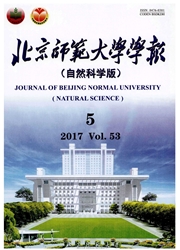

 中文摘要:
中文摘要:
土壤水是连接大气降水、地表水和地下水的关键水文带,在旱寒区对于维系植被生长起到至关重要的作用.为获取相对精度较高,时空分布更广的土壤含水量数据,本文采用青藏高原2006年MODIS(moderate resolution imaging spectroradiometer)植被归一化指数NDVI(normalized difference vegetation index)数据与地温数据LST(land surface temperature)计算出青藏高原全年温度植被干旱指数TVDI(temperature vergetation dryness index);分析TVDI数据与GLDAS各层土壤含水量的相关性以及相关性的稳定性,结果表明:总体上TVDI数据与GLDAS各层土壤含水量数据呈负相关关系,其中TVDI与GLDAS第1层土壤湿度数据相关性最好,且相关性的稳定性较强;利用TVDI和GLDAS第1层数据的相关关系反演出青藏高原2006年每月土壤水分分布图,并利用月均值进行实例分析,结果表明反演结果与GLDAS数据基本吻合,仅在青藏高原南部和北部两个区域存在偏差.与原始GLDAS数据相比,TVDI反演的土壤含水量数据具有更高的分辨率(分辨率为1 km),在时间尺度上,可以反演逐月的土壤水分.
 英文摘要:
英文摘要:
Soil water is a critical connection among precipitation,surface and groundwaters,and it is important in sustaining vegetation growth in cold and arid regions.To obtain soil moisture data with high precision and spatiotemporal distribution,MODIS (moderate resolution imaging spectroradiometer),NDVI (normalized difference vegetation index)and ground temperature LST (land surface temperature)are used to fit wet and dry edges.These are used to estimate TVDI in Tibet in 2006 by ArcGIS.Analysis of TVDI and GLDAS soil moisture data indicated a negative correlation between TVDI and GLDAS per layer soil moisture. TVDI showed best correlation with the first layer soil moisture of GLDAS and correlation is the most stable, with Cv at 0.075,or higher.Correlation between TVDI and the first layer soil moisture of GLDAS was used to retrieve monthly soil moisture distribution in the Tibet Plateau in 2006.,Mean soil moisture distribution in 2006 was analyzed.Distribution of the retrieved figure was found to be in good agreement with the original G-LDAS data,only two deviation regions were found in Tibet Plateau.Compared with original data,retrieved soil moisture gives higher resolution,and can be used to retrieve monthly soil moisture.
 同期刊论文项目
同期刊论文项目
 同项目期刊论文
同项目期刊论文
 期刊信息
期刊信息
